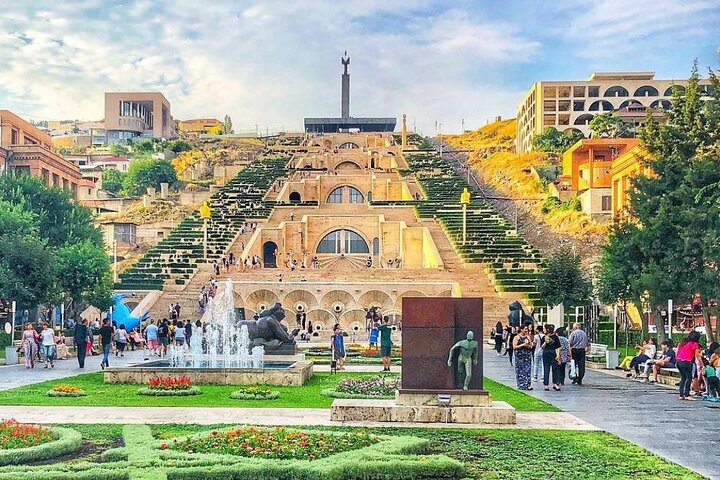Gyumri and Harichavank: A Pilgrimage of the Soul
In search of deeper understanding and connection, I embarked on a journey to Gyumri and Harichavank, where history and introspection intertwined.
A Journey Through Time in Gyumri
The journey to Gyumri began with a sense of anticipation, a yearning to delve into the heart of Armenian culture and history. As the bus rolled out of Yerevan, I found myself reflecting on the path that had led me here. The end of a long-term relationship had set me adrift, and travel had become my anchor, a way to explore not just the world but the depths of my own soul.
Our guide, Sunny, was a beacon of warmth and knowledge. Her voice, both in speech and song, resonated with the history of the places we visited. The Museum of National Architecture and Urban Life was our first stop, a portal into the past. Walking through its rooms, I was struck by the tangible connection to the Alexandropol period. The original furniture whispered stories of a bygone era, and I felt a kinship with the people who had once inhabited these spaces.
The Black Fortress loomed on the horizon, a testament to the resilience of the city. Though its interior offered little to explore, standing within its walls, I imagined the soldiers who once defended this stronghold. It was a place of contemplation, a reminder of the fortitude required to withstand life’s battles.
The Soul of Gyumri’s Streets
Gyumri’s old streets welcomed us with a quiet charm, a stark contrast to the bustling energy of Yerevan. As I wandered through the cobblestone paths, I felt a sense of peace, a momentary escape from the chaos of modern life. The city seemed to breathe art and culture, and I found myself drawn to the Art Basement B612, where paintings and sculptures spoke to the creative spirit that thrived here.
Sitting on a bench, I allowed the muses to find me, their whispers guiding my thoughts. The streets of Gyumri were a canvas, painted with the stories of artists and dreamers. It was a place where time seemed to slow, allowing for introspection and the quiet unraveling of one’s inner world.
The journey through Gyumri was not just a physical exploration but a spiritual one. It was a reminder that even in the midst of change and uncertainty, there is beauty to be found in the simple act of wandering, of allowing oneself to be present in the moment.
Harichavank: A Sanctuary of Reflection
Our final destination was the Harichavank Monastery, perched on the western slope of Mount Aragats. The ancient stones of the monastery walls told stories of centuries past, each layer a testament to the passage of time. As I stepped into the main chamber, I was enveloped by a profound sense of tranquility.
Sunny’s voice filled the space, her song echoing off the walls, and I closed my eyes, letting the melody wash over me. It was a moment of meditation, a chance to confront the silence within and embrace the solitude that travel often brings.
Outside, the creek whispered its own song, a gentle reminder of the continuity of life. I sat by the water, watching the rocks that had stood for millennia, and felt a connection to the ancient souls who had once called this place home. It was a humbling experience, a reminder of the smallness of our existence in the grand tapestry of history.
The road back to Yerevan was challenging, a metaphor for the journey of self-discovery. Bumps and detours are inevitable, but they are part of the adventure, shaping us into who we are meant to be. As the bus carried us back to the city, I felt a renewed sense of purpose, a deeper understanding of the path I was on.
This journey to Gyumri and Harichavank was more than a tour; it was a pilgrimage of the soul, a chance to reflect on the past and embrace the future with open arms. Explore Gyumri and Harichavank


















































